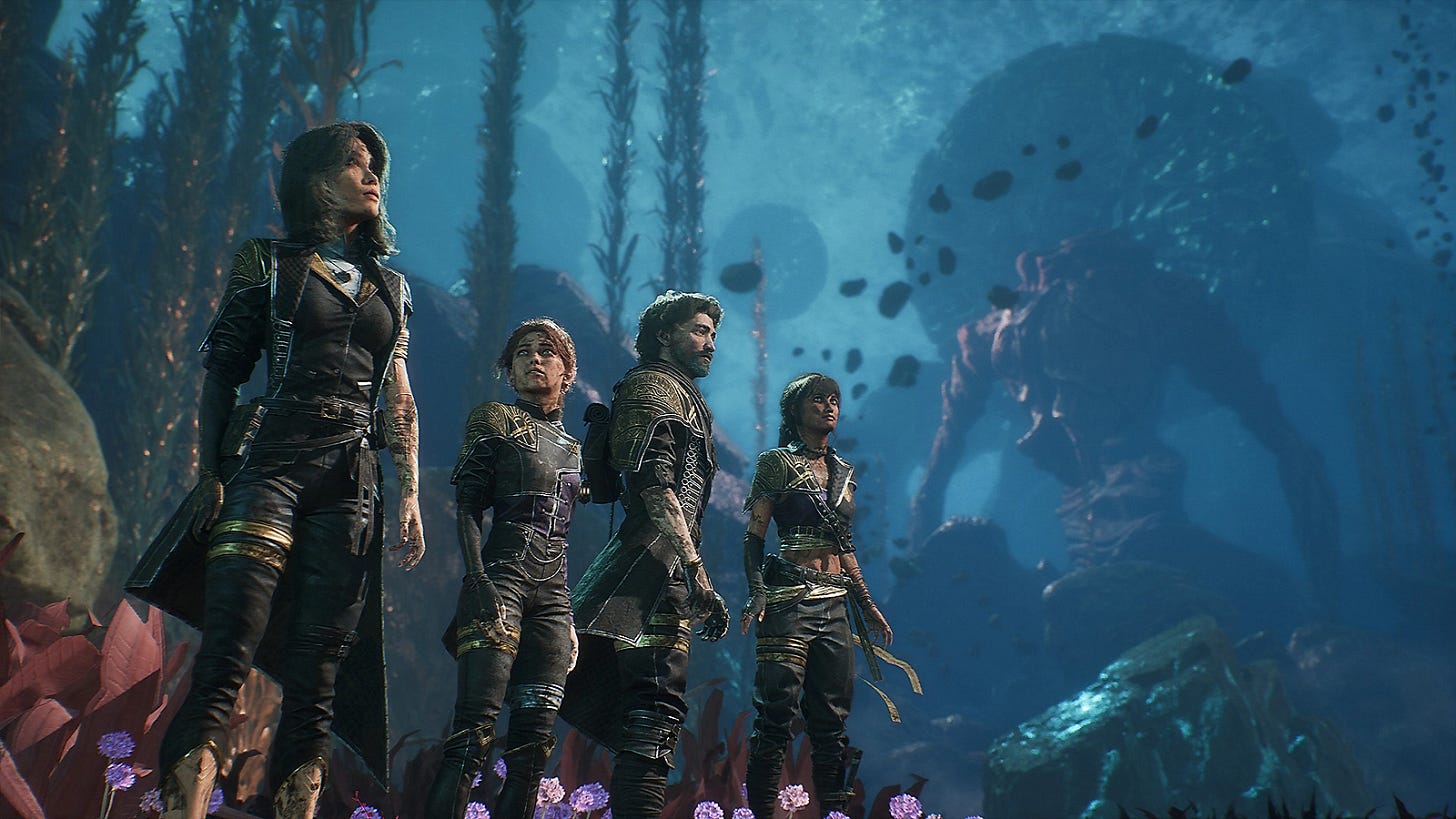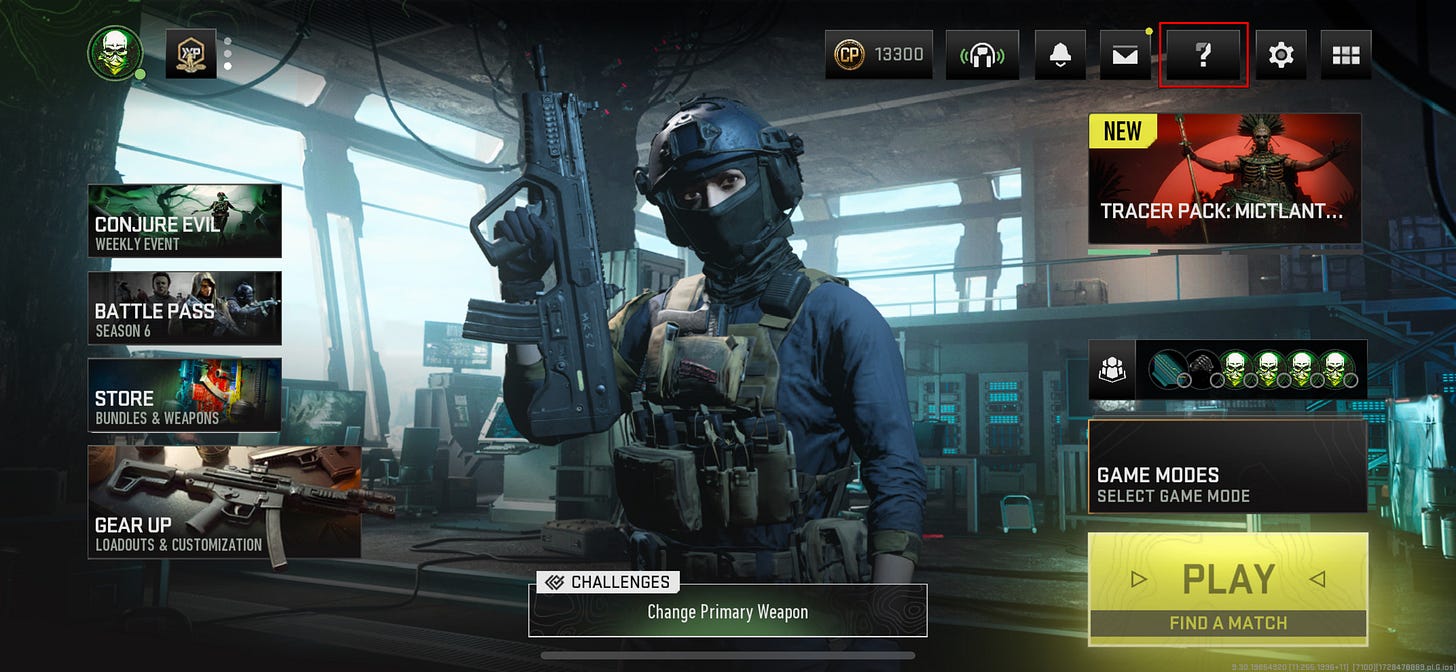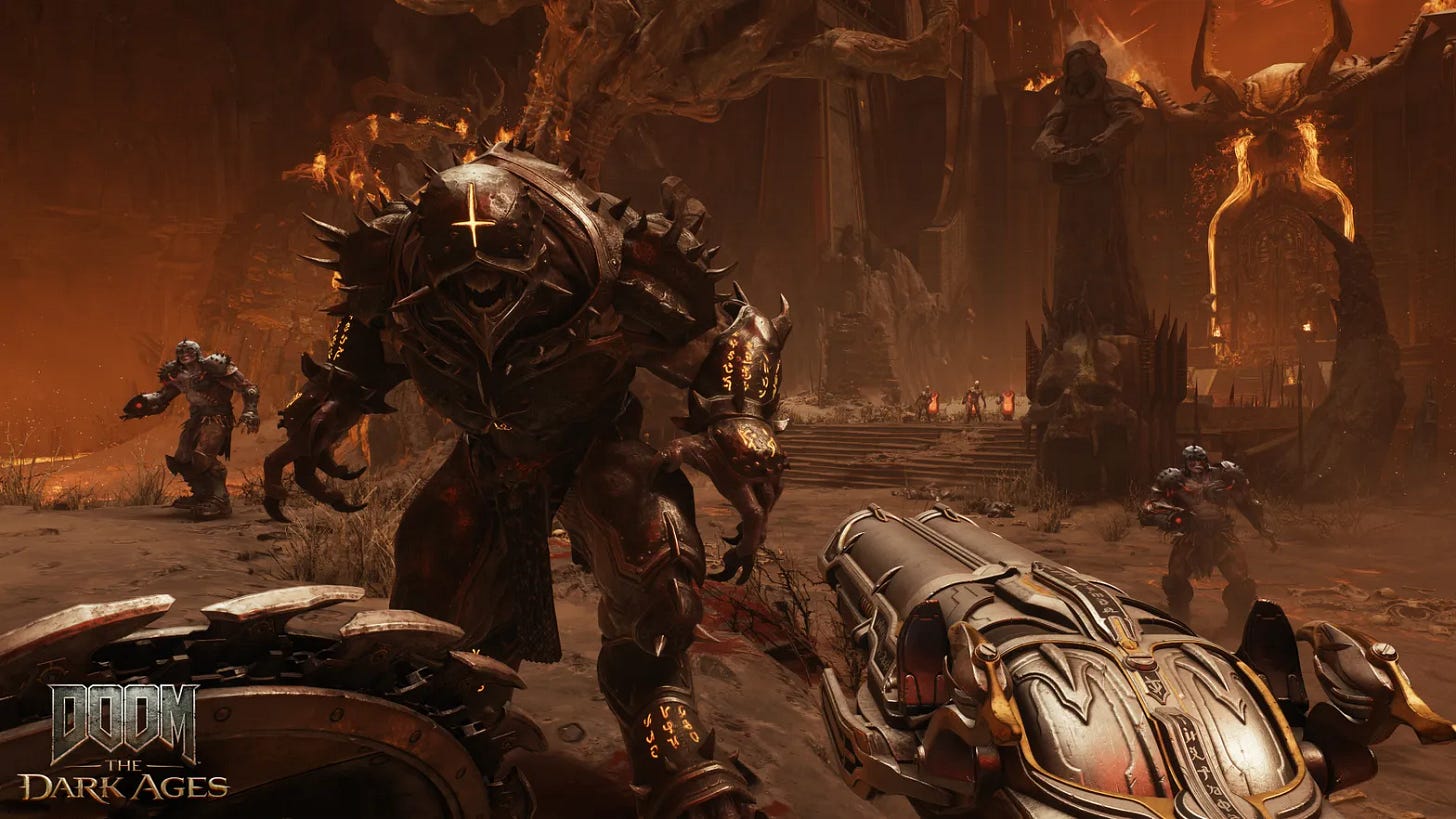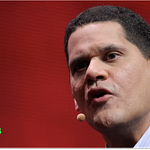Listen now on Apple, Spotify or YouTube
In This Edition
- Show Topic: Company financials reviewed
- Newsletter topic: Can a big hit change the market?
- What happened with Warzone?
- Did Doom: The Dark Ages succeed?
Hello! Welcome! You’re looking fabulous today.
You’ll be sick of hearing about this soon… but did you know we’ve got an event on in a couple of weeks? It’s in LA. Twitch is there, and Netflix, Wizards of the Coast, Blizzard, AGBO, Build A Rocket Boy (plus, another big speaker to be announced). And it’s free to attend if you’re someone who is reading this newsletter (which you are!). Just apply for tickets through here.
But back to today’s Show. We’ve got games investor and shareholder veteran Jean-Benoit Roquette joining us to look at game company financials, plus we share some data around Call of Duty Warzone on mobile and Doom: The Dark Ages.
That’s the Show. In terms of the Newsletter… well, we have some of the same data below. And you can read me riff on something Take-Two CEO Strauss Zelnick said in our interview last week.
Enjoy!
“Growth always comes from hits”
Just make more hits people. That’s the answer. The solution to all our woes.
During Take-Two’s financials, I am often privileged to get a few minutes with CEO Strauss Zelnick to discuss the results. He’s got a lot of people to talk to, so the time is always short and he helpfully keeps his answers succinct. Sometimes they’re too succinct, and I have to follow-up. But often I find there’s clarity in his laconic responses.
Last week I had the chance to speak with Zelnick and I asked him where he felt industry growth was going to come from. We’ve been talking on this topic a lot since we launched The Game Business. Is it streaming? Subscription? AAA games on mobile? IP development through film and TV? Nintendo Switch 2? UGC platforms like Roblox?
“Hits,” came Zelnick’s response. “Growth always comes from hits. That’s our job. Make the best hits, make the biggest hits, serve consumers.”
There we go. Just make some hit games, folks. I don’t know what we were all worrying about.
It’s easy to be dismissive of a comment like that. Except… He’s right. We spend a lot of time obsessing over business strategy, platforms, distribution models, and monetisation options, but all of that amounts to nothing if you don’t have any hits (and note we’re talking ‘hits’ here, not just good games. There are plenty of good games that don’t become hits).
Equally, a big hit can overcome a lot of obstacles. There’s a lot of criticism levelled online at Nintendo Switch 2 around its pricing, apparent lack of innovation, and overall messaging… but if Mario Kart World is a winner (and history suggests it will be), none of that is going to matter.
You can probably tell I am in reflective mood this week. And that’s partly because in this week’s episode of The Game Business Show, myself and investor relations guru Jean-Benoit Roquette delved into the annual financial results of various game companies (you can hear that above).
I’ve also been looking at the performance of the market this year. It is down. Console hardware sales are down heavily. Game sales are also down. In some markets, we’re seeing a drop of 10% or more in terms of software sales (digital and physical). The number of people playing games are down, too.
Ampere revised its estimates last week and now expects the industry to deliver a less than 1% growth in revenue in 2025. With inflation, that’s yet another year of decline for this industry.
“Console hardware sales are down heavily. Game sales are also down. In some markets, we’re seeing a drop of 10% or more in terms of software”
There are a lot of intelligent people with strong opinions declaring what needs to be done about it. It appears we all need to be making games like Clair Obscur: Expedition 33, and nobody should be doing a Concord. We all should be building games with small teams and a lot of outsourcing, and shifting away from big, internal AAA studios.
Expedition 33 is a game made by a (relatively) small team on a (relatively) small budget, which focused in on a few key areas and executed them very well. It’s not a new concept. In fact, many of last year’s best-selling games had the same approach. And this year, Expedition 33 is a hit, Blue Prince is a hit, Schedule I is a hit, Split Fiction is a hit… none of these games were made with obscene budgets, and none of them cost $70, either.
Jason Schreier wrote a compelling piece on Bloomberg about the incoming arrival of $80 games. He highlighted the challenges they will face in the current economic landscape, and says that gamers simply have too many options (pointing to the above list of games) to feel the need to spend so much on a AAA release.
As we saw last year, the AAA space is clearly challenged. Star Wars Outlaws, Dragon Age: The Veilguard and Final Fantasy VII: Rebirth were all big budget AAA games of 2024 that, although decent, failed to deliver the results expected of them.
So that’s the answer. Make shorter, more focused games, with smaller teams and sell it at a reasonable price. Sorted.
Except… Except 2023 was awash with big, pricey AAA blockbusters that did deliver the results expected (and then some). Games like Hogwarts Legacy, Diablo IV, Zelda: Tears of the Kingdom, Spider-Man 2, Baldurs Gate 3. And this year we’ve just seen big numbers for Kingdom Come: Deliverance 2, Assassin’s Creed Shadows and a massive performance for Monster Hunter Wilds.
There are similar contradictions in the live-service space. It’s clearly very hard to succeed here. We saw that last year with Suicide Squad, with X-Defiant and, of course, with Concord. But then we also saw huge numbers for Helldivers 2 and Marvel Rivals.
How many exceptions to the rule do we need before it stops become a rule?
The reality is there are no hard rules on how to deliver a hit in video games. But what I feel we are getting is a sense of clarity over what works and what doesn’t. There’s no exact formula, of course, and you can do everything right and still fail to find an audience. But whether you’re a free-to-play live-service game, a $50 AA new IP, or an $80 AAA action title, there is a route to success. There is a route to delivering a hit.
Another strong opinion I read this week was from old stomping ground at GamesIndustry.biz. Rob Fahey put together his take on the latest round of company financials, and was alarmed by the apparent ‘franchise obsession’ and lack of focus on new IP on display from the big companies.
“There are no hard rules on how to deliver a hit in video games. But what I feel we are getting is a sense of clarity over what works and what doesn’t”
I understand his view. ‘Focus’ has been the word in the industry for a while now, with major publishers doubling down on their big brands at the expense of trying new things. Well, mostly. EA just published Split Fiction, and the likes of Microsoft, Sony, Take-Two and Nintendo all have new things coming soon… even Capcom has a new IP on the slate. But there’s certainly a more conservative approach to green lighting new ideas right now. And caution is not usually conducive to finding that next big hit.
Ultimately, it’s important for game companies to get their balance sheets under control. Fahey himself has frequently praised Capcom for its consistency in performance, and that’s been entirely down to the firm’s focus on delivering high quality entries in the established Monster Hunter and Resident Evil franchises. It’s only with costs under control can these companies look to start investing in new ideas again, as we discuss on this week’s episode of The Game Business Show.
But also, the game industry isn’t reliant on those big players to deliver creative innovation and industry growth. If the major public companies are focusing less on new things, then that creates opportunities for everyone else. We’re firmly in the age where a big hit is just as likely come from a self-publishing indie, or a Kepler, or Raw Fury, or Playstack, than it is a Ubisoft or an EA.
All of this is to say that for all the very legitimate concerns, we are a hit-driven business. The entertainment industry is in general. Hollywood was having a rough 2023 until Barbie and Oppenheimer came along. At the start of 2024, game analysts were predicting a slow start to the year, only for Helldivers 2 and Palworld to blow up and change the narrative.
As the video games industry grasps around for the next key ‘growth engine’. As it seeks out that one business model, or piece of technical innovation, or distribution solution that can unlock millions of new customers… perhaps the answer is really a lot more straightforward. What will determine the industry’s success going forward is its ability to create some truly special games that can excite, inspire and move generations of players.
Or to put it another way: “growth always comes from hits”.
Call of Duty’s bid for mobile battle royale supremacy falls short
Activision Blizzard has ended support for the mobile version or Call of Duty Warzone, as it struggled to crack the lucrative mobile battle royale market.
The game Is no-longer available to via iOS or Googe Play. However, its other Call of Duty game – Call of Duty Mobile – continues to deliver big numbers.
Warzone was Activision’s attempt to establish itself in the huge battle royale mobile market, which is particularly big in territories such as India and China. However, its numbers pale in comparison to its more established competitors. During April, Warzone had three million active players (App Magic data), whereas PUBG Mobile attracted just shy of 50 million users, and Free Fire had just under 60m. Even a relatively recent entrant in the market, 2023’s Blood Strike from Netease, had around 7m players last month, more than double that of Warzone.
In terms of revenue, since launch in March 2024, Call of Duty Warzone on mobile has grossed around $17m (App Magic figures, excludes Google’s and Apple’s 30% cut). By comparison, Call of Duty Mobile made more than that last month alone.
Don’t expect this to alter Microsoft’s determination to grow in mobile. The firm has frequently cited mobile as an opportunity for its key brands to find new audiences, particularly in markets where console and PC gaming remains small.
Doom: The Dark Ages has three million players. Is that good?
Bethesda’s Doom: The Dark Ages was one of the most talked about games coming out of last year’s Xbox showcase, and it arrived less than a year later to a strong critical reception.
Five days later, Bethesda announced that the game had soared past three million players, hitting that number ‘seven times faster than [previous game] Doom Eternal’ managed.
Doom: The Dark Ages was part of the Xbox Game Pass subscription service, and so it was a given the game would beat its predecessors in terms of launch players. But is three million actually any good?
Just a few weeks ago, Bethesda released Elder Scrolls IV: Oblivion Remastered and attracted four million players in just four days. In early December last year, it released Indiana Jones and the Great Circle, which had also reached four million players by the end of January (although that game didn’t receive a PS5 release during that period).
Other Game Pass games we have some data on include Rebellion’s Atomfall, which brought in 1.5 million players over its first weekend. And South of Midnight from Compulsion Games, which attracted one million players over its first three weeks (the game also didn’t receive a PS5 release).
These numbers are not all Game Pass, of course. But Rebellion admitted to us this week that Atomfall’s player count is heavily skewed towards Xbox as a result of Game Pass. And according to Ampere, Doom: The Dark Ages only managed around half a million on PS5, with over two million players on Xbox.
So considering those data points, is three million in five days for Doom: The Dark Ages a strong result?
It would be wildly inaccurate to characterise three million players as disappointing, yet I had expected a bit more. It’s the PlayStation and PC numbers that seems a bit on the low side. It has been a congested period for releases, including two other games from Bethesda on PS5 in the last month (Oblivion and Indiana Jones). And one analyst noted to me that a lot of the key Doom messaging has come via Xbox channels (including last year’s debut trailer), which may have impacted visibility for users of other platforms.
Of course, player numbers only tell a slice of the story. What was the average playtime for that audience? How did the game’s premium sales perform? Did it bring in new subscribers?
Either way, I feel there’s more opportunity for Doom: The Dark Ages outside of the Xbox console. And hopefully it’ll reach those fans in the weeks and months ahead.
Meanwhile…
Curve, the UK publisher responsible for Human: Fall Flat and For the King, has been acquired by India’s Nazara Technologies for £21.7 million. The deal includes Curve’s studios Runner Duck and IronOak.
Netflix Games’ ambition to become a destination for kids took a step forward this week with the release of the World of Peppa Pig game to coincide with the latest Peppa Pig series. Netflix has also signed Sesame Street, which will include the development of video games.
After five years, Fortnite has returned to the App Store. Apple had initially blocked Epic’s latest attempts to get the game on the store, but a US District Judge Yvonne Gonzalez Rogers put pressure on the tech giant to resolve the situation.
Microsoft has dominated the US sales charts for April with five games in the Top Ten. The Circana chart is led by Elder Scrolls IV: Oblivion at No.1, with Forza Horizon 5 at No.2. Other Microsoft titles include Minecraft at No.4 (boosted by the movie release), Indiana Jones and the Great Circle at No.6 (boosted by its launch on PS5) and Call of Duty: Black Ops 6 at No.7.
Embracer is spinning off its indie games label Coffee Stain as a standalone separate listed company. It is also rebranding its ‘Middle-earth Enterprises and Friends’ group as ‘Fellowship Entertainment’ (which is clearly a better name). This group features some of Embracer’s biggest IP, including Lord of the Rings, Kingdom Come Deliverance, Dead Island and Tomb Raider.
Nintendo is returning to Gamescom. The platform holder skipped last year’s event but will be making a return to the Cologne consumer and trade show just a few months after the release of Nintendo Switch 2.
That’s it for today. Stay tuned to The Game Business for more interviews and analysis. Plus announcements around The Game Business Live.















